Ikat is a traditional ancient dyeing and weaving technique used to create patterned textiles. Images thought to represent ikat can be seen in Indian cave paintings created in the 7th century. The origins of the word are Indonesian meaning to 'tie' or 'bind.'
 In ikat, the resist is formed by binding individual yarns or bundles of yarns with a tight wrapping applied in the desired pattern. The yarns are then dyed. The bindings may then be altered to create a new pattern and the yarns dyed again with another colour. This process may be repeated multiple times to produce elaborate, multicolored patterns. When the dyeing is finished all the bindings are removed and the yarns are woven into cloth. In other resist-dyeing techniques such as tie-dye and batik the resist is applied to the woven cloth, whereas in ikat the resist is applied to the yarns before they are woven into cloth. Because the surface design is created in the yarns rather than on the finished cloth, in ikat both fabric faces are patterned.
In ikat, the resist is formed by binding individual yarns or bundles of yarns with a tight wrapping applied in the desired pattern. The yarns are then dyed. The bindings may then be altered to create a new pattern and the yarns dyed again with another colour. This process may be repeated multiple times to produce elaborate, multicolored patterns. When the dyeing is finished all the bindings are removed and the yarns are woven into cloth. In other resist-dyeing techniques such as tie-dye and batik the resist is applied to the woven cloth, whereas in ikat the resist is applied to the yarns before they are woven into cloth. Because the surface design is created in the yarns rather than on the finished cloth, in ikat both fabric faces are patterned.
 Our Ikat fabrics are produced in the Odisha Region of India. The process of weft ikat has meticulous steps which need to be followed to create intricate designs. Weft Ikat yarns are spread across a wooden frame in the width of the fabric to be woven. This process involves planning in terms of the dimensions of the repeat that are to be used across the final fabric.
Our Ikat fabrics are produced in the Odisha Region of India. The process of weft ikat has meticulous steps which need to be followed to create intricate designs. Weft Ikat yarns are spread across a wooden frame in the width of the fabric to be woven. This process involves planning in terms of the dimensions of the repeat that are to be used across the final fabric.
 Yarns are spread in sections which are then tied with the use of binding yarns or plastic sheets to cover larger areas. An interesting feature to note about weft ikat is the presence of a Line (Master line) on the edge of the design areas of the Weft ikat fabric. This is set into the bandha pattern and serves as a marker to ensure that the pattern is set correctly. The image on the right explains the bandha process and towards the edge of the screen, you can see the master line running across the length of the design (above).
Yarns are spread in sections which are then tied with the use of binding yarns or plastic sheets to cover larger areas. An interesting feature to note about weft ikat is the presence of a Line (Master line) on the edge of the design areas of the Weft ikat fabric. This is set into the bandha pattern and serves as a marker to ensure that the pattern is set correctly. The image on the right explains the bandha process and towards the edge of the screen, you can see the master line running across the length of the design (above).
As the design is set in the weft yarns and then woven by hand, often the clarity we see on a graph converts to a slightly fuzzy appearance of the design. This is due to the nature of the craft and clarity can depend upon the materials that are used in weaving the final fabric.



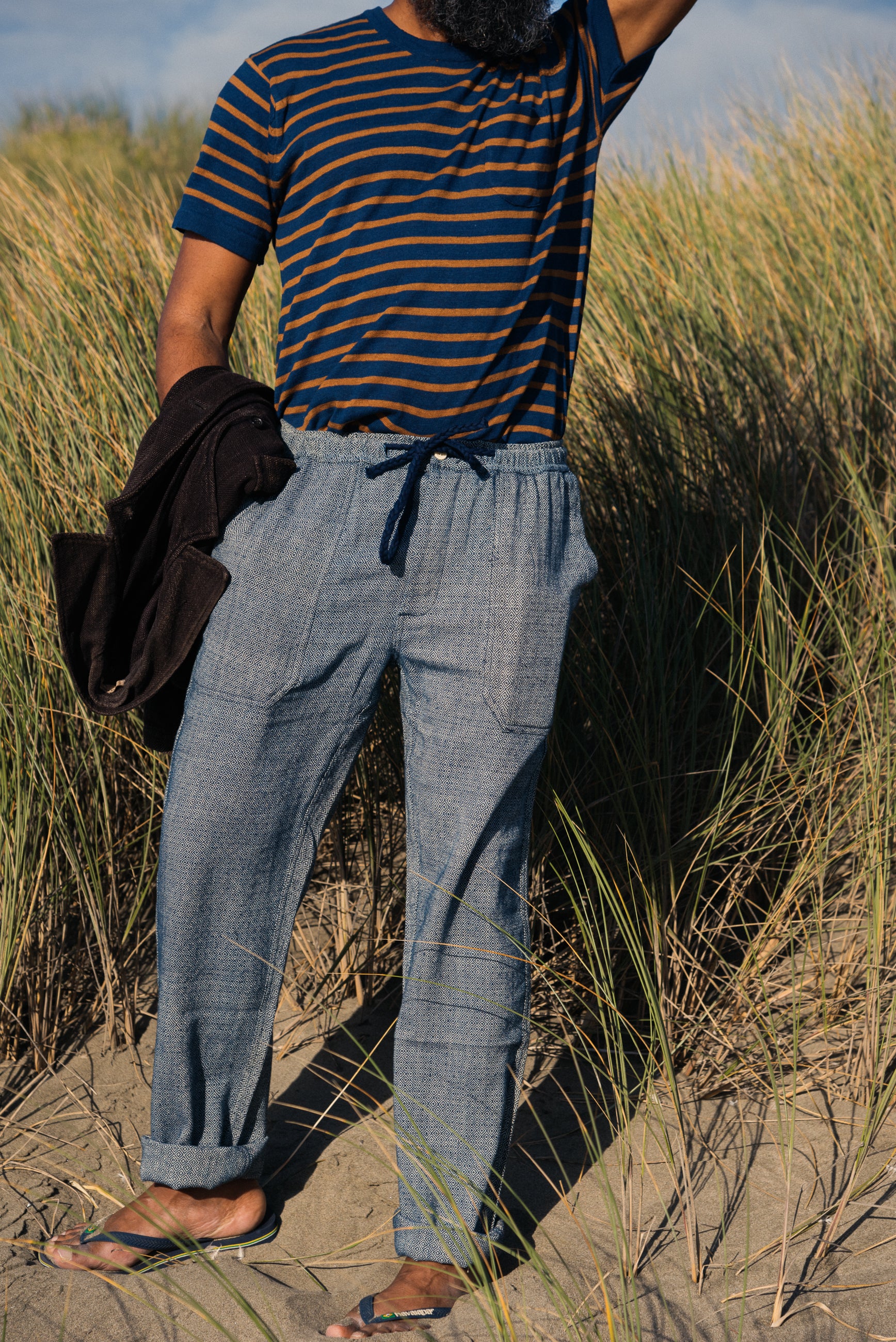
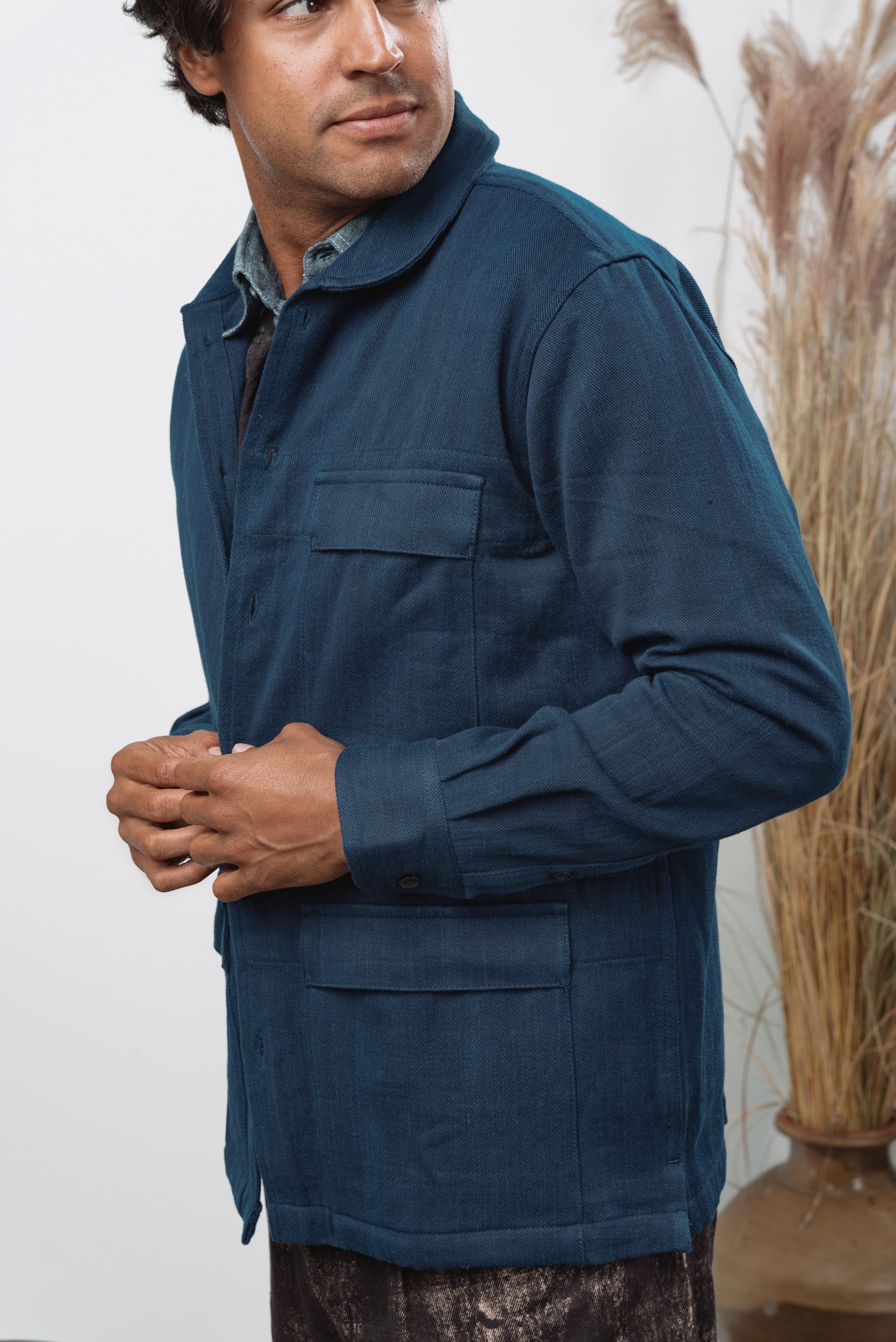
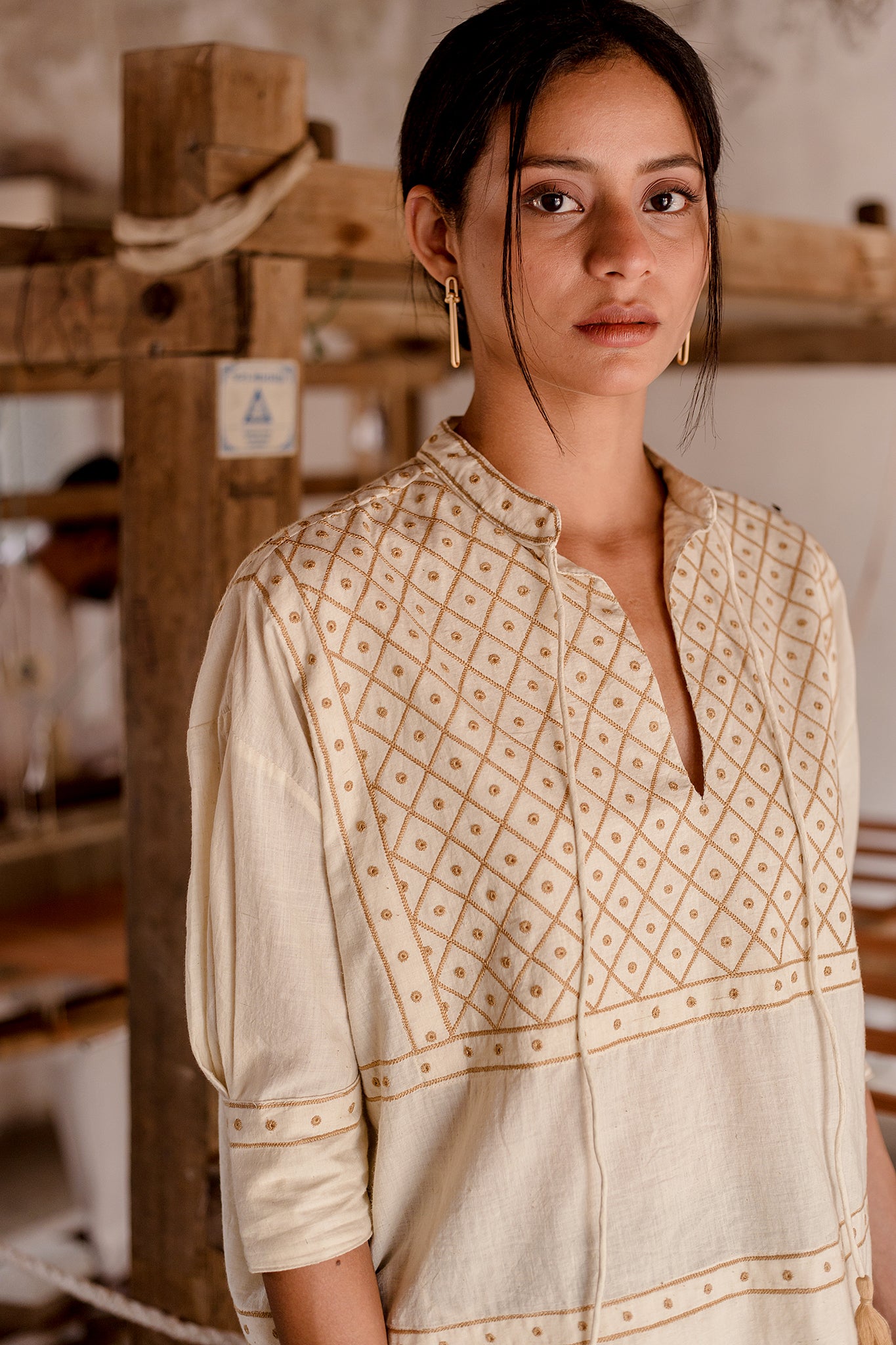
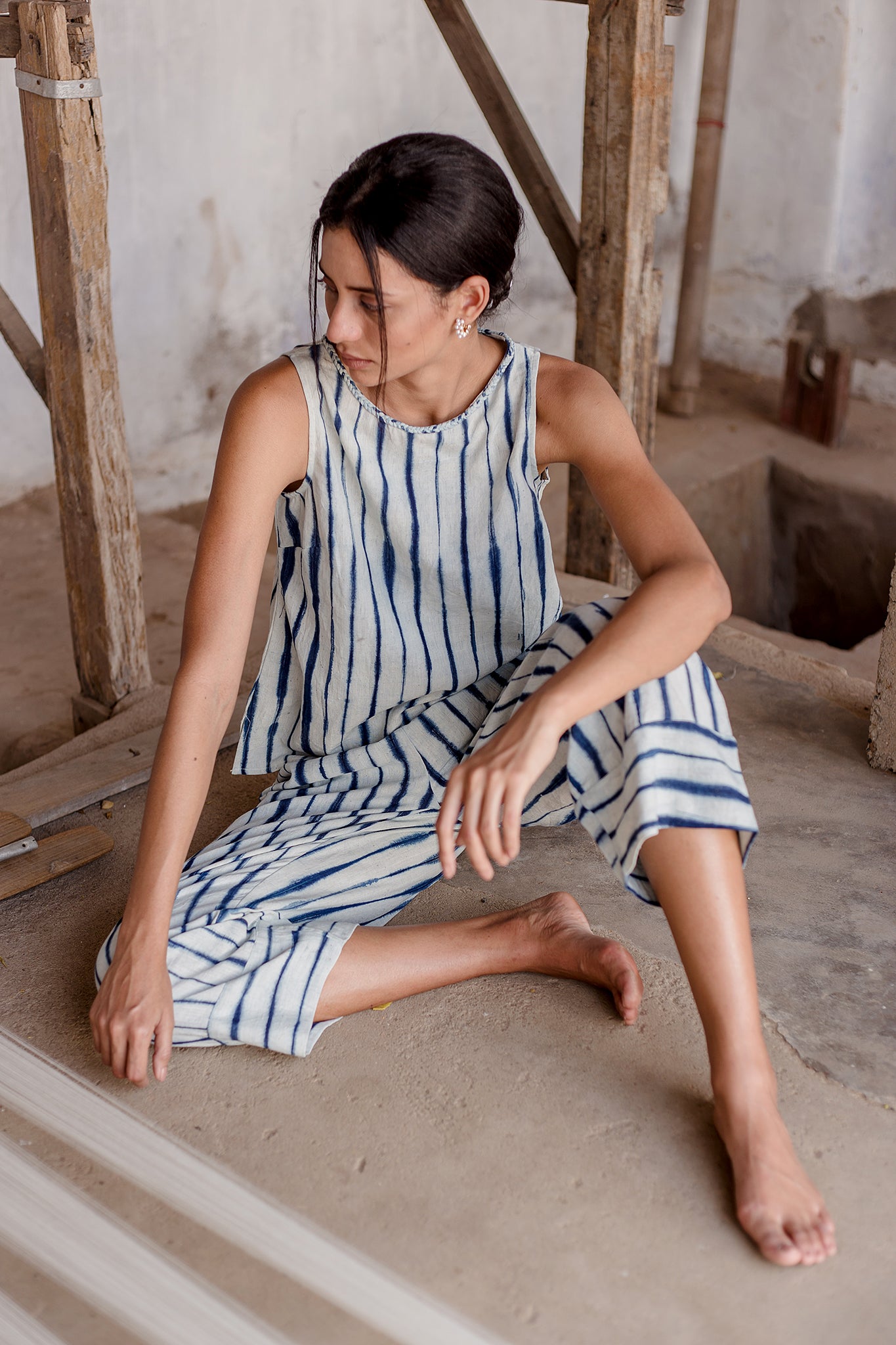
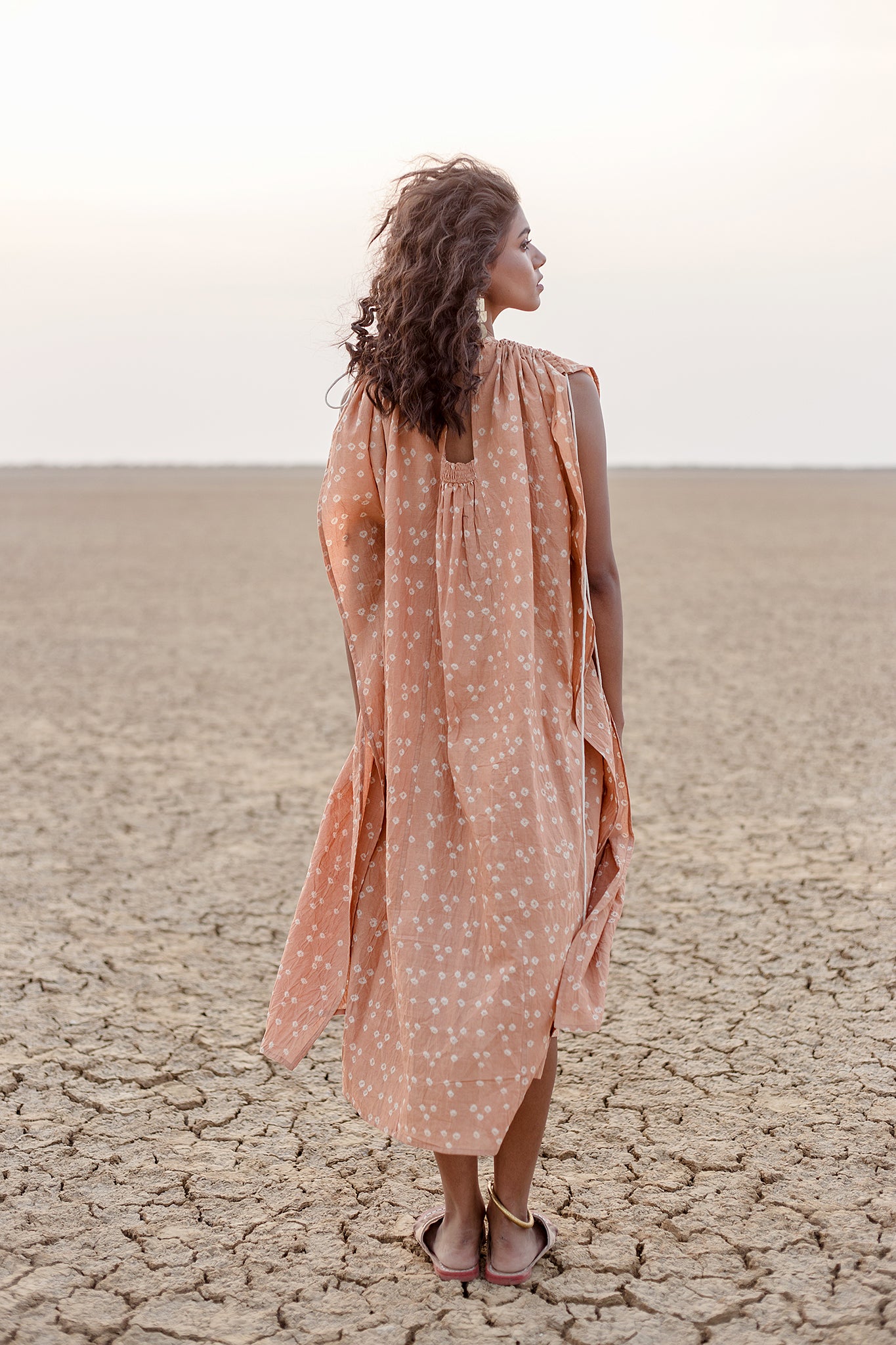



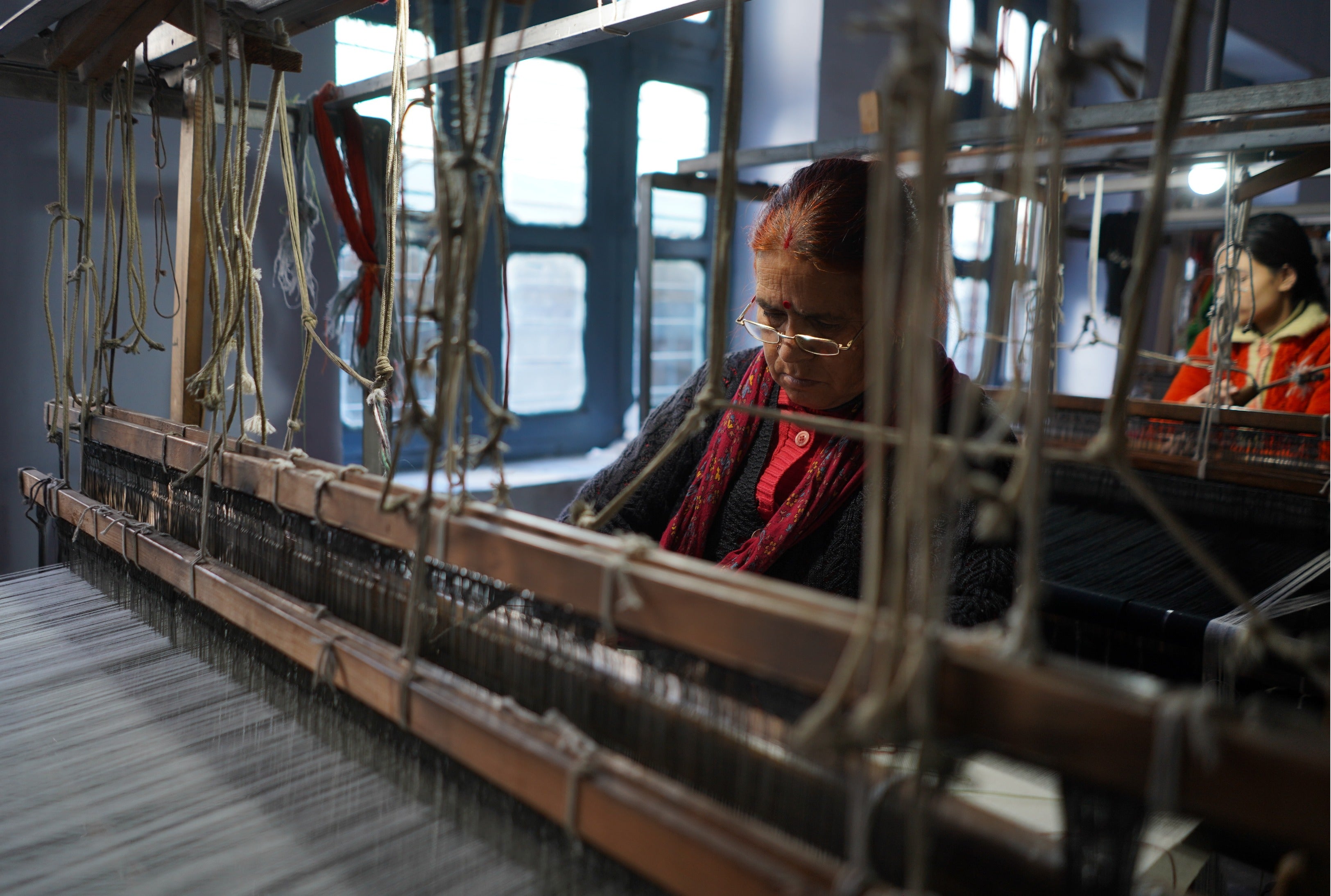
Leave a comment
This site is protected by reCAPTCHA and the Google Privacy Policy and Terms of Service apply.